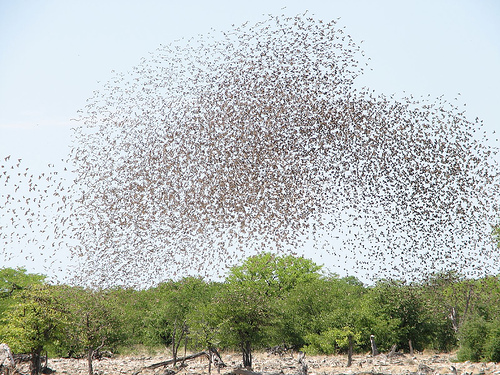Munene Macharia, an entomologist with the Kenya Agricultural Research Institute, reported at the Wheat for Food Security Conference that outbreaks of pests such as cereal aphids, which suck sap from plants like wheat and transmit viruses, have become increasingly common in Kenya as seasons grow drier.
“There is a definite relationship between the pests and the increase in temperature and the decrease in rainfall in some parts of the country,” he said. A 1995 outbreak of Russian wheat aphids destroyed entire crops in Kenya, where positive year-round growing conditions also ensure a constant food supply for aphids, he added.
Researchers have also found that, as rains have become more erratic in parts of Kenya, the quelea bird - the most destructive grain-feeding bird in Africa, which normally migrates in search of water - has grown more sedentary, causing it devour even large quantities, Macharia said.
Farmers’ only options are to apply pesticides, which are expensive, or to rely on pest-resistant crop varieties, which are being developed, he said. “What we need is more research on the impact climate change will have on these pests in relation to our food crops - so we know when to expect an outbreak to help farmers decide on when to plant.”
Pests, along with pathogens and weeds, destroy 40 percent of the world’s food supply every year, according to the Food and Agriculture Organisation.
Scientists, mostly in the industrialized world, have just begun to study the impact of climate change on agricultural pests.
“Insects cannot internally regulate their own temperature and their development depends on the temperature to which they are exposed in the environment,” wrote Jürgen Kroschel and Jacqueline Becker, of the International Potato Center (CIP), on the website Climate Change, Agriculture and Food Security.
CIP scientists have developed a temperature-related model for a potato-eating moth; the model can predict the growth of the insect’s population according to different climatic conditions. They suggest the model could be replicated for other insects to predict future changes in pest populations resulting from climate change.
jk/rz
This article was produced by IRIN News while it was part of the United Nations Office for the Coordination of Humanitarian Affairs. Please send queries on copyright or liability to the UN. For more information: https://shop.un.org/rights-permissions





